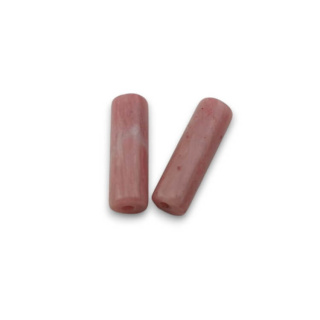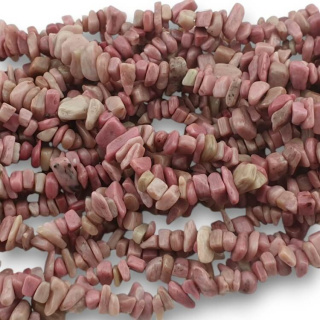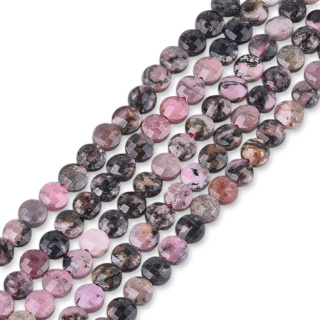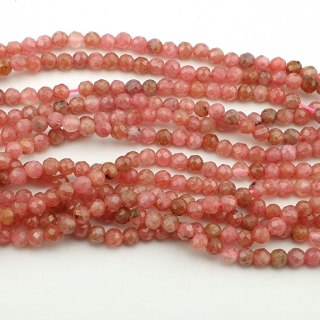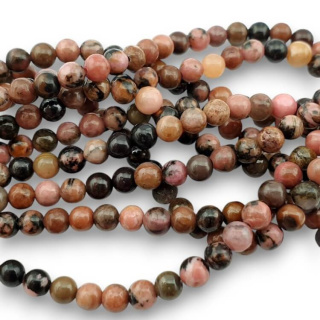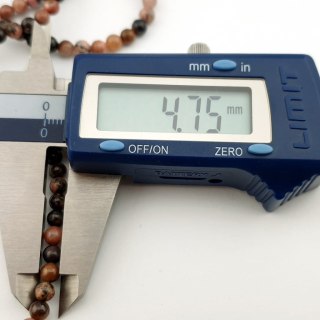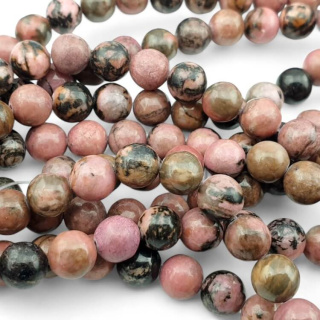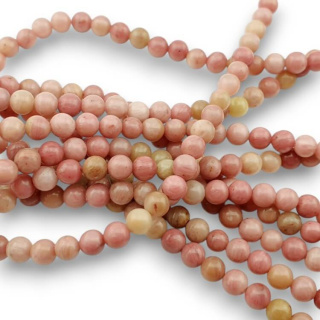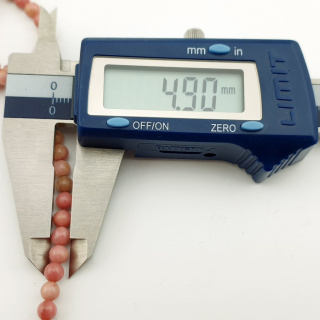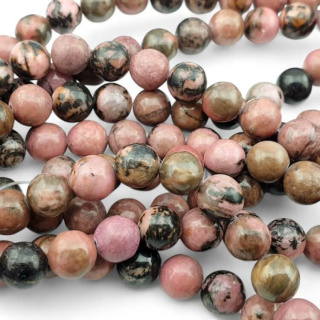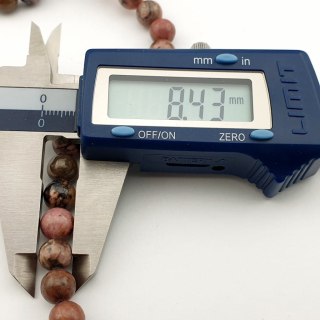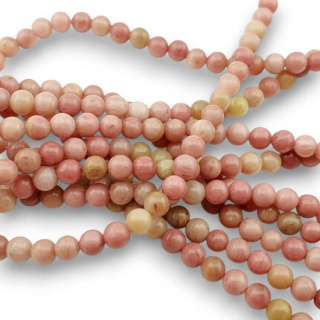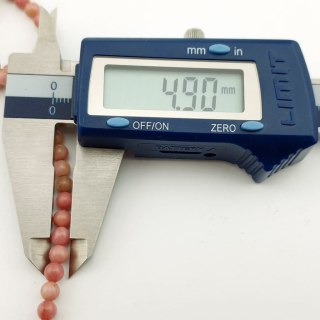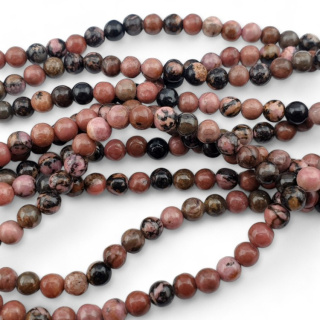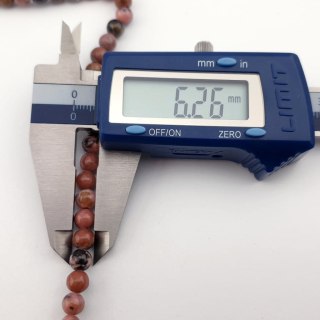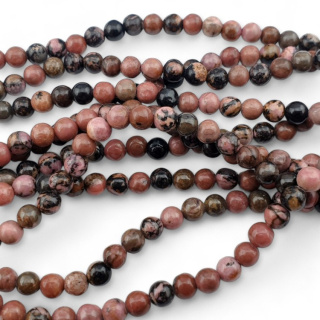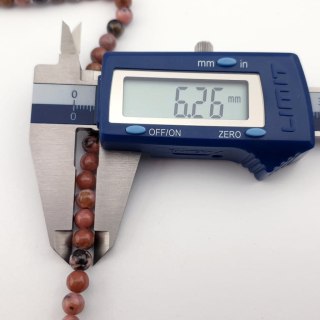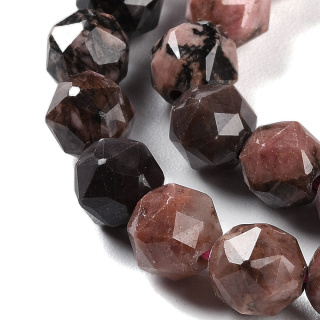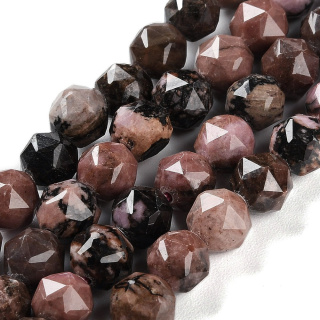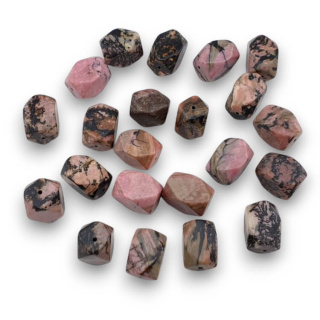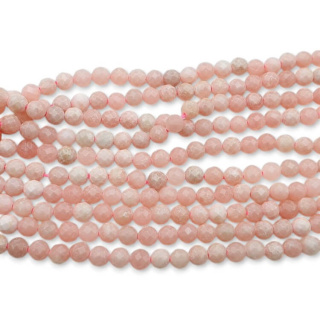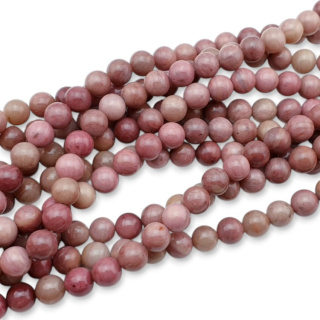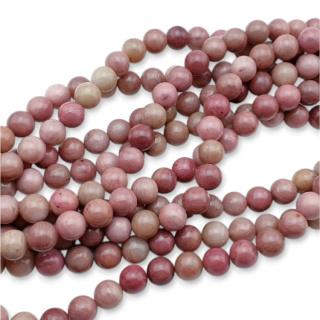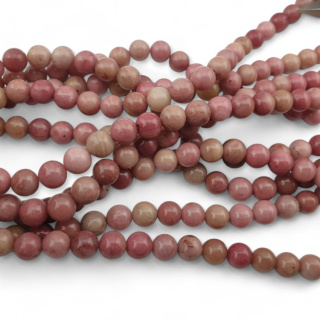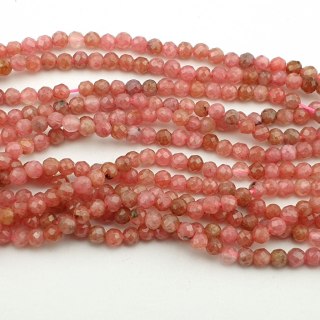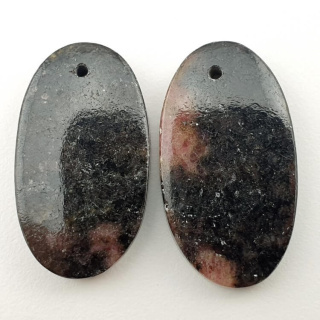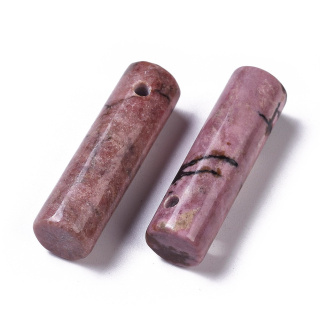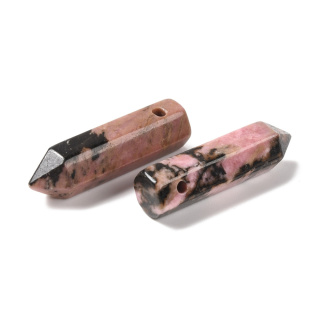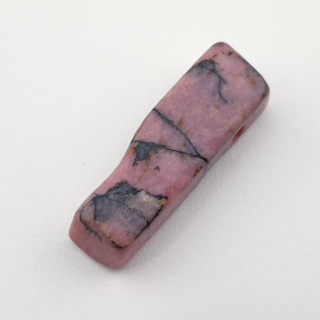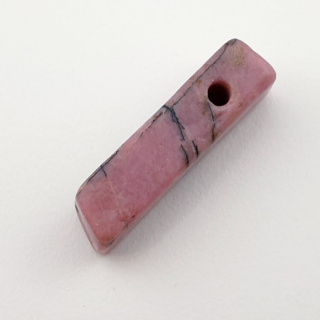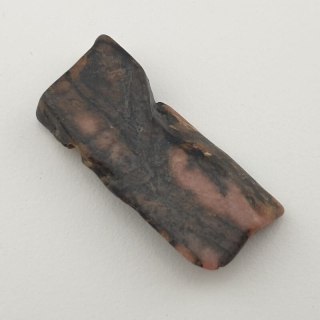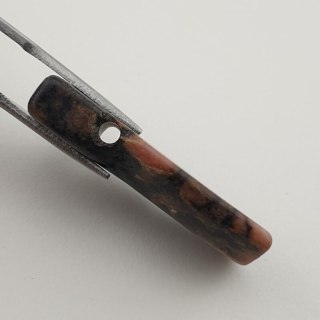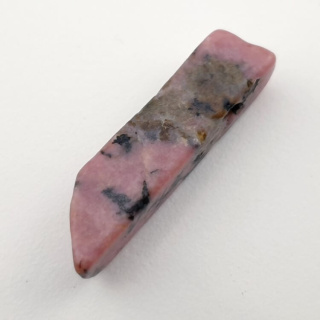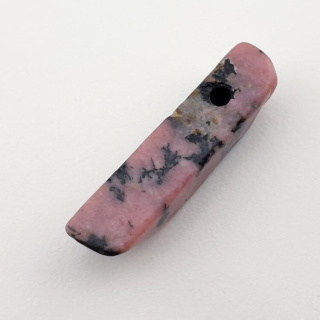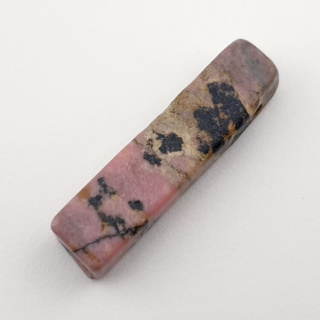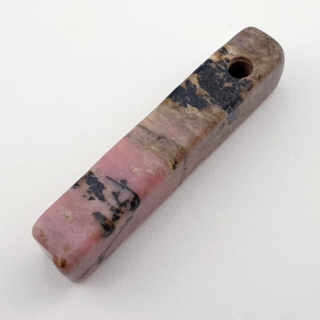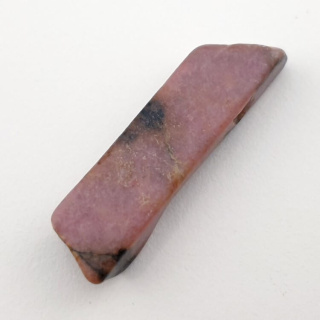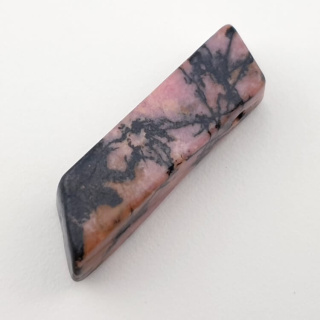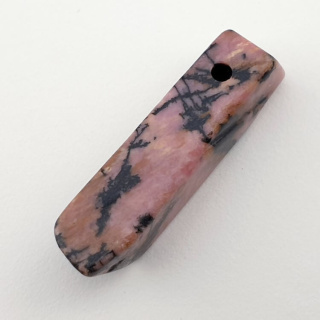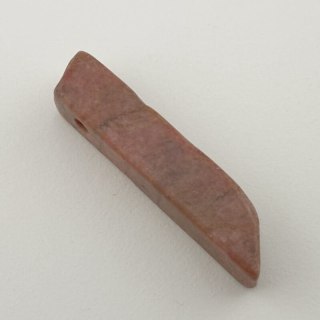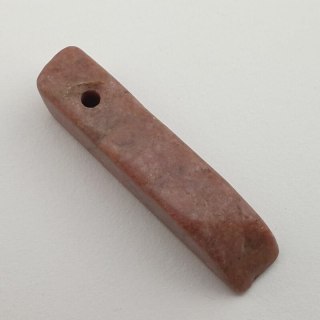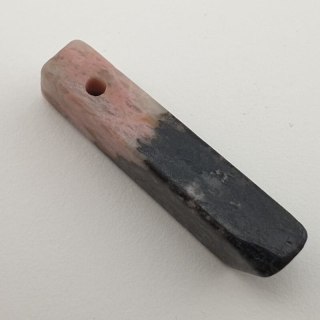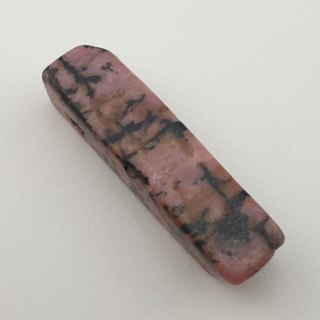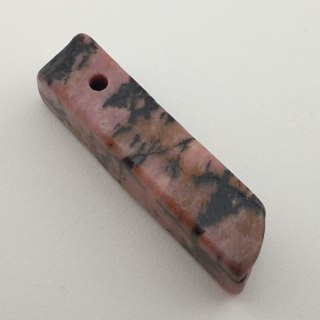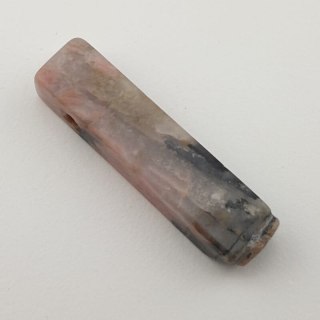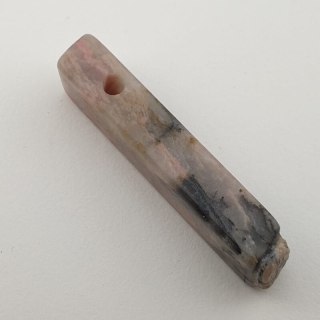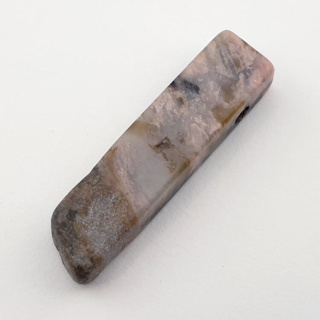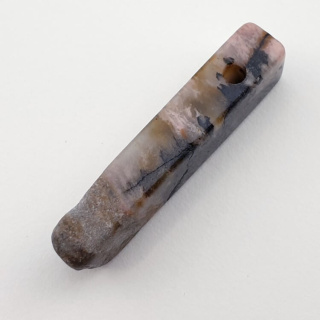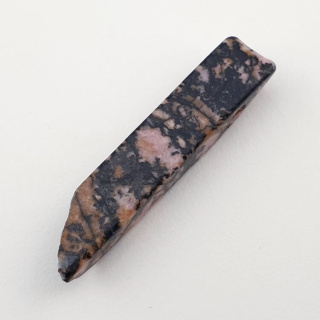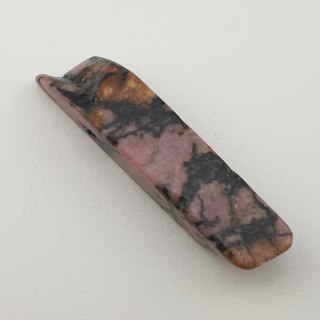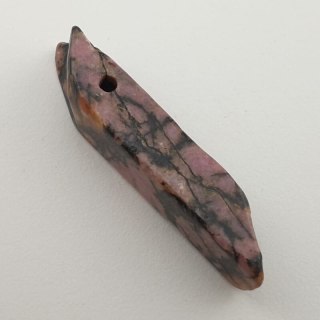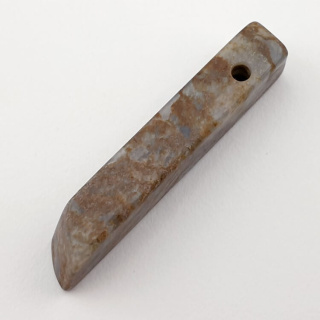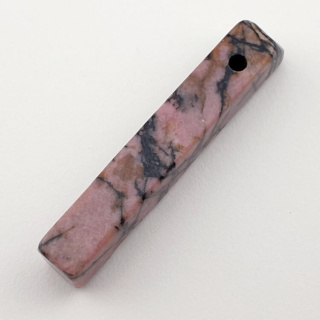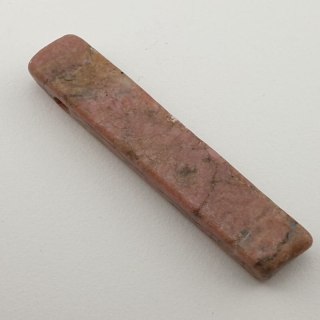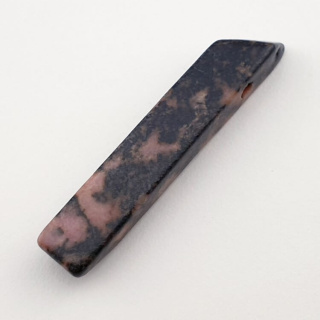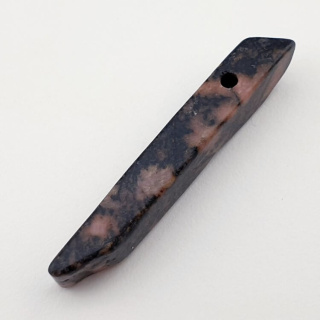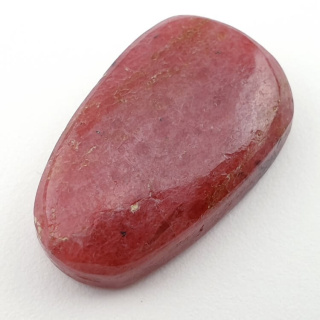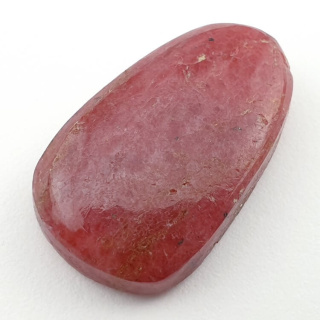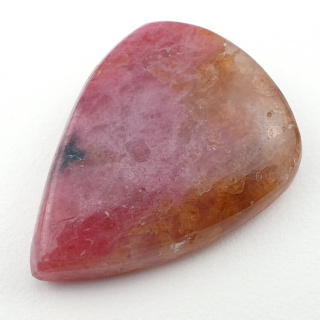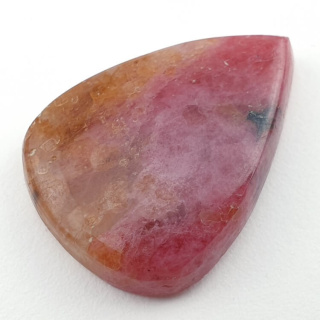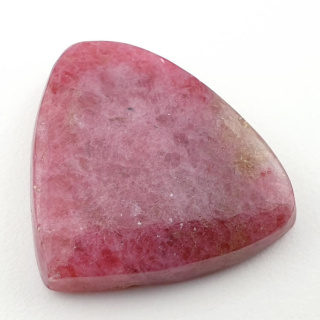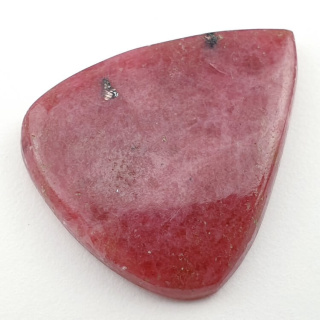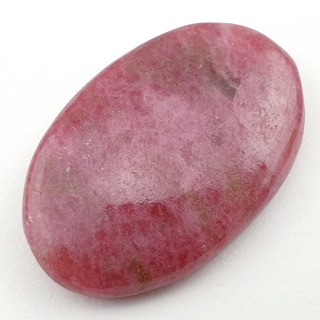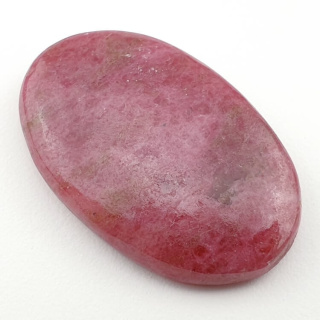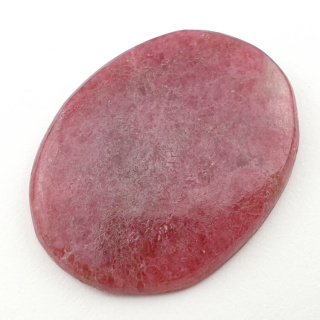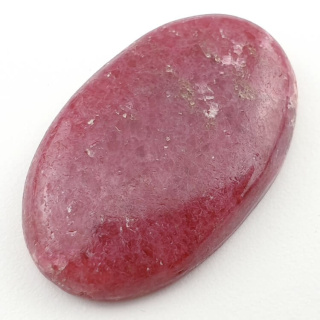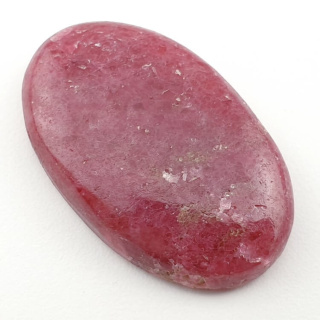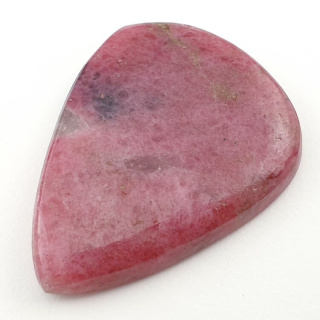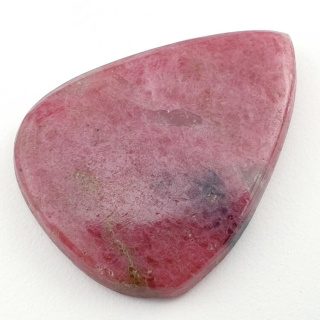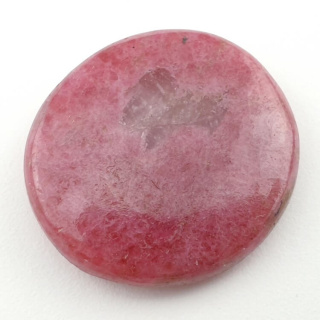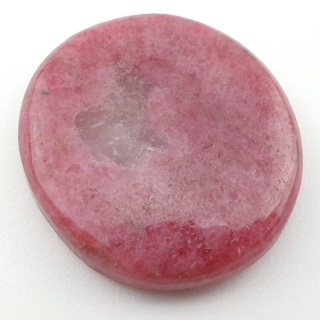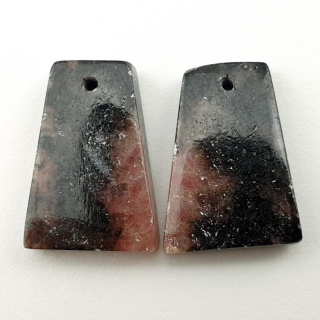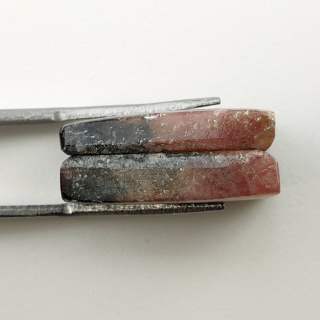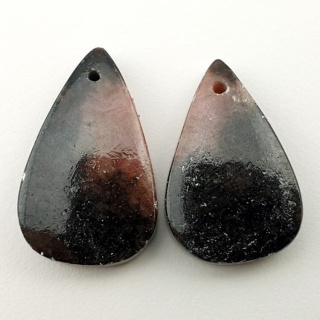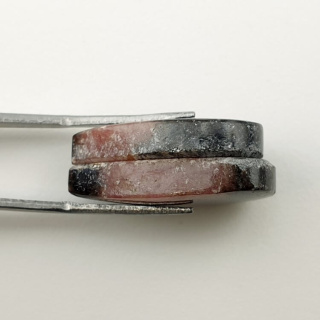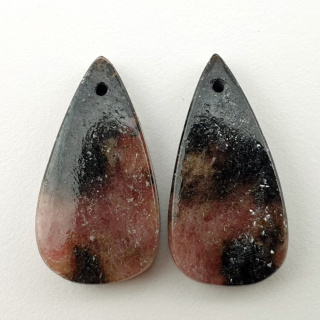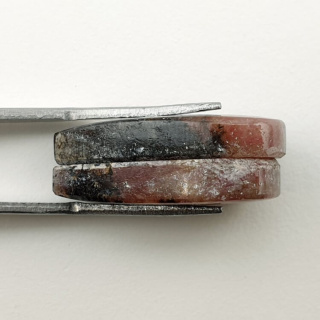Rhodonite – a pink and red gemstone
Number of products : 89What is rhodonite?
Rhodonite is a mineral that comes in various shades of pink, often found in the form of pink crystals or gemstones. It belongs to the silicate family. The name rhodonite comes from the Greek word “rhodon,” meaning rose, referring to the characteristic color of this mineral.
Rhodonite is a relatively popular mineral among mineral collectors due to its beautiful color and aesthetic appearance. It can also be used in jewelry to make various ornaments such as necklaces, bracelets, and rings.
What is the chemical composition of rhodonite and what are its properties?
The chemical composition of rhodonite is manganese and calcium silicate. It is a complex mineral that contains calcium (Ca), manganese (Mn) and silicon (SiO2) as its main chemical components. In addition, it may contain trace amounts of other elements, which may affect its color and properties.
Here are some physical properties of rhodonite:
- Color: Rhodonite is best known for its pink color, which can vary in shade from light pink to dark pink.
- Mohs hardness scale: Rhodonite's hardness on the Mohs scale is usually between 5.5 and 6.5, which means it is a mineral of moderate hardness. It is slightly softer than quartz, which has a hardness of 7 on the same scale.
- Luster: The surface of rhodonite has an oily or vitreous luster.
- Fracture: Rhodonite has an uneven, scaly fracture.
- Trident cleavage: This mineral has a distinct cleavage that is characteristic of silicates.
- Mineral density: The density of rhodonite is usually between 3.4 and 3.7 g/cm³.
- Crystallographic system: Rhodonite has a triclinic crystallographic system. Its crystals have a complex crystal structure.
- Reactivity: Rhodonite is relatively resistant to acids, but it can react to strong acids, causing the mineral to dissolve.
It is worth noting that the physical properties of rhodonite may vary slightly depending on the specific variety of the mineral and where it was found.
Where is rhodonite mined?
Rhodonite is a mineral found naturally on various continents around the world. Here are a few places where naturally occurring rhodonite can be found:
- Russia: Russia is one of the world's main sources of rhodonite. This mineral is particularly well known from the Ural region, where beautiful pink rhodonite crystals can be found.
- Sweden: Sweden is another European country where rhodonite is found. Swedish rhodonites are often light pink and are also prized in jewelry.
- Brazil: In Brazil, rhodonite can be found in various shades of pink, especially in the state of Minas Gerais. This mineral is used in jewelry making.
- India: There are also rhodonite deposits in India. Pink gemstones from this region are very popular in the jewelry market.
- USA: In the United States, this pink mineral can be found in various states, including Montana, New York, and Arizona.
- Canada: Canada is another place where rhodonite comes from. It is found in the province of Ontario.
- Australia: Australia also has rhodonite deposits, especially in the state of Queensland.
What do other varieties of rhodonite look like?
In addition to traditional pink rhodonite, there are also other colors and varieties of this mineral. Rhodonite is often known for its pink color, but its different varieties can take on different shades and hues. Here are some examples of other colors and varieties of rhodonite:
- Honey rhodonite: This is a variety of rhodonite that is honey or brown in color. It may contain varying amounts of manganese and calcium, which give it this color.
- Black rhodonite: This variety has a dark brown or black color with pink veins or spots. It is a relatively rare variety of rhodonite.
- Gray rhodonite: Gray rhodonite ranges in color from light gray to dark gray. It is less common than pink rhodonite.
- Dirty brown rhodonite: This variety of rhodonite has a more intense brown hue than honey rhodonite.
- Olive rhodonite: This is a variety of rhodonite with an olive or green color, often containing traces of manganese and iron.
- Whitish rhodonite: This can range in color from white to beige and is less common than pink rhodonite.
- Blue rhodonite: Although it is a rarer variety, rhodonite with a blue hue can sometimes be found. This is the result of the presence of impurities such as copper or cobalt.
It is worth noting that different varieties of rhodonite can have different properties and uses, both in jewelry and in mineral collecting. Differences in color and chemical composition give these varieties their unique charm.
What magical properties does rhodonite have?
Rhodonite is used in esoteric practices and has certain magical and spiritual properties. However, it is important to note that these interpretations are subjective and based on beliefs rather than scientific evidence. Here are some of the magical or spiritual properties that are often attributed to rhodonite:
- Stone of love and empathy: Rhodonite is sometimes considered a stone of love, empathy, and compassion. It is believed that wearing it can help develop more cordial and empathetic interpersonal relationships.
- Boosting self-confidence: Some believe that rhodonite can help increase self-esteem and self-confidence, which can be particularly beneficial for people who struggle with self-acceptance.
- Supporting relationships: This stone is often associated with the energy of love and friendship in relationships. It is believed that it can help with conflict resolution and creating harmony in relationships.
- Heart energy: Rhodonite is a heart stone and is associated with the fourth chakra, or heart, in the Hindu and Buddhist chakra system. In spiritual practices, it can be used to work with heart energy and emotional balance.
- Developing intuition: Some people believe that rhodonite can help develop intuition and the ability to perceive subtle energies.
- Stress relief: This stone is also associated with relieving stress and nervousness and increasing feelings of calm and balance.
It is worth noting that the magical properties of gemstones are often a matter of personal belief and the effects can be subjective. Those interested in esoteric practices may wish to experiment with different stones and crystals, including rhodonite, to find those that best suit their needs and intentions.
What number and chakra is rhodonite associated with?
Rhodonite is a heart stone and is associated with the fourth chakra, which is called “Anahata” in the Hindu and Buddhist chakra systems. The fourth chakra is located in the chest area, above the heart, and is associated with heart energy and emotional and spiritual aspects such as love, compassion, acceptance, and balance.
In numerology, rhodonite is the number 4. It is associated with themes of stability, foundations, order, and balance, which in a sense may resonate with the energy of the fourth chakra, but this is more a matter of personal interpretation than established tradition.
![[{[item.product.name]}]]([{[item.product.photo.url]}] 75w)


